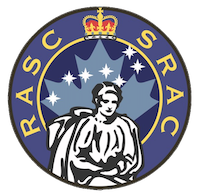Johan Oskar Backlund (April 28, 1846 – August 29, 1916) was a Swedish-Russian astronomer. His name is sometimes given as Jöns Oskar Backlund, however even contemporary Swedish sources give "Johan". In Russia, where he spent his entire career, he is known as Oskar Andreevich Baklund (Оскар Андреевич Баклунд). Russian sources sometimes give his dates of birth and death as April 16, 1846 and August 16, 1916, in the Julian calendar that was used in Russia during that period.
He was born in Länghem, in Västergötland, Sweden and graduated from Uppsala University in 1872. After getting his doctorate in 1875, he emigrated to Russia in 1876. He worked at Dorpat Observatory, in today's Tartu, Estonia, and then in 1879 worked at Pulkovo Observatory, becoming director of the observatory from 1895 until his death.
He specialized in celestial mechanics, and notably worked on calculating the orbit of Comet Encke, taking into account the perturbations of various planets. He used observations of Comet Encke to try estimate the mass of Mercury. Russian sources sometimes referred to the comet as Comet Encke-Backlund. He also carried out geodesic studies in Spitsbergen from 1898 to 1900. He became a member of the Saint Petersburg Academy of Sciences in 1883, member of the Royal Swedish Academy of Sciences in 1897 and Fellow of the Royal Society in 1911. He was elected a Foreign Honorary Member of the American Academy of Arts and Sciences in 1914.
Dr. Backlund was elected an Honorary Fellow of the Royal Astronomical Society of Canada at a meeting on 1916-04-27. The occasion was noted in his obituary in JRASC.
The asteroid (856) Backlunda, and also a lunar crater are dedicated to him.

